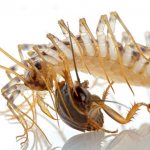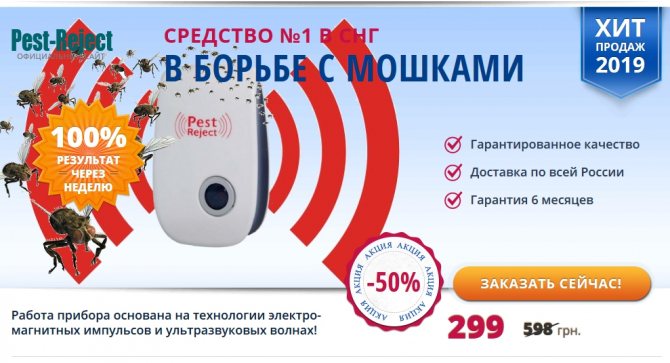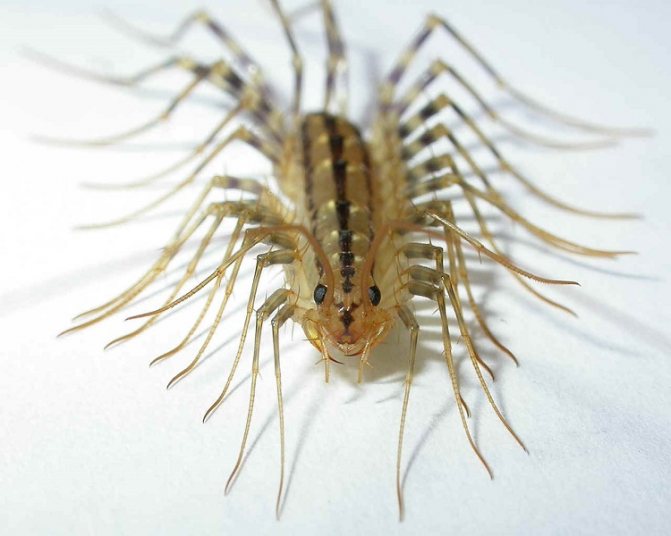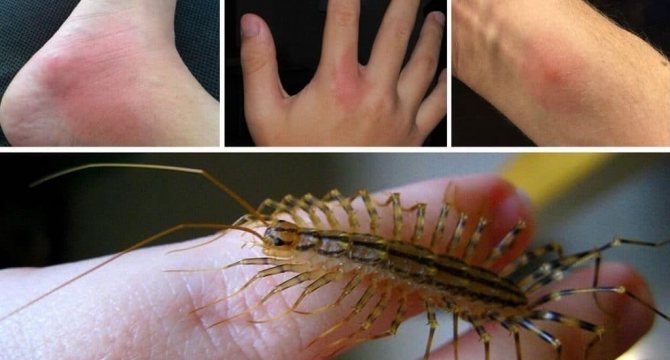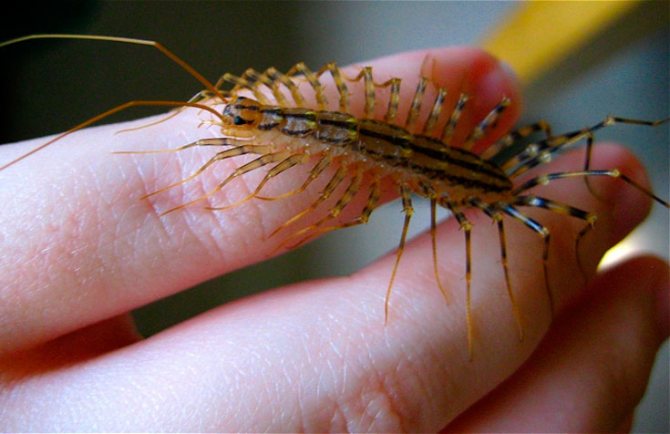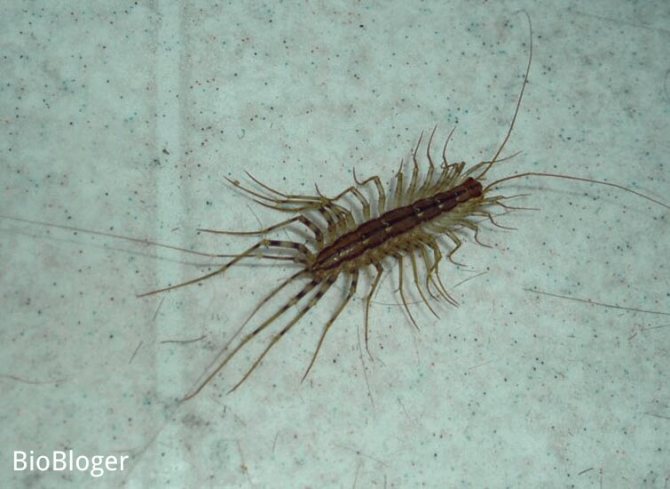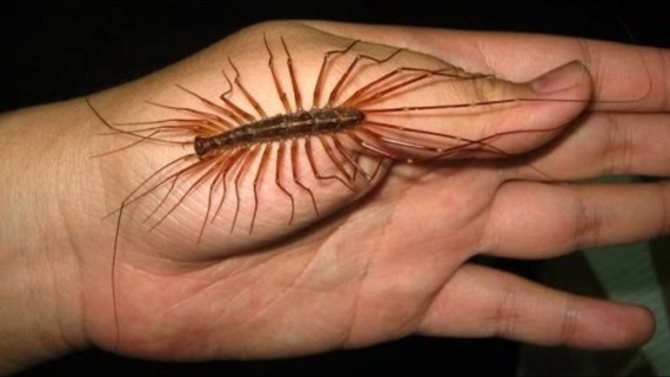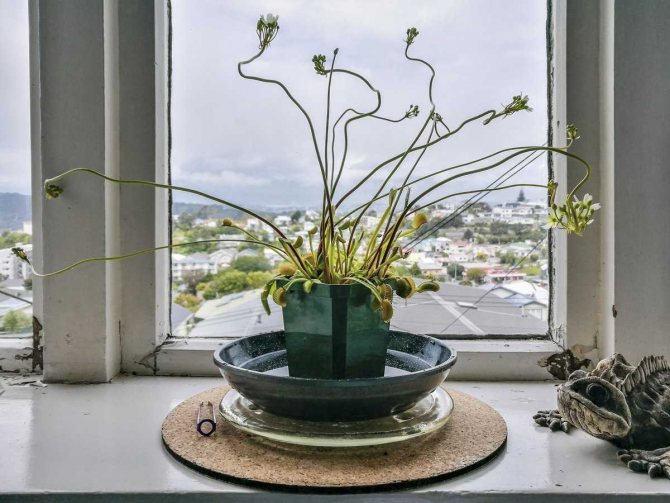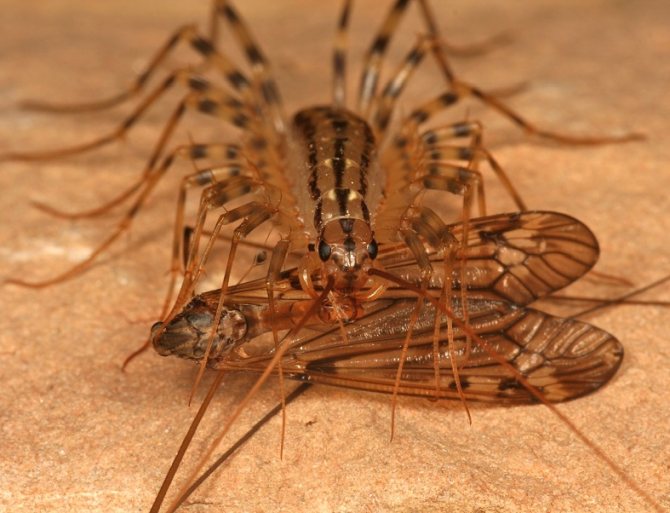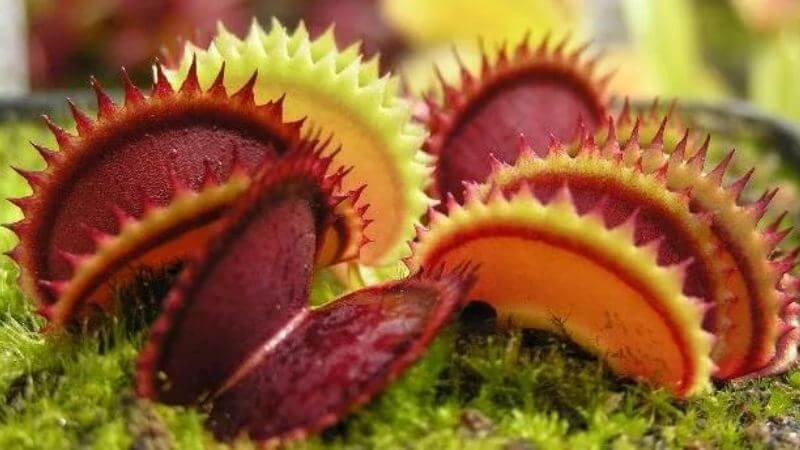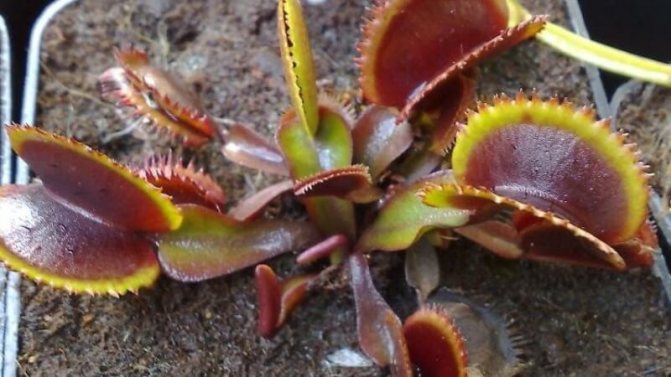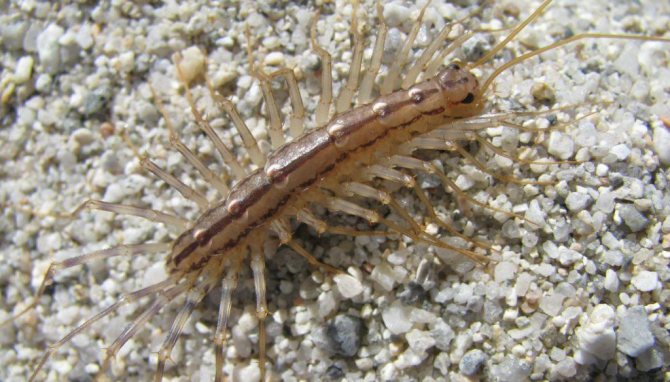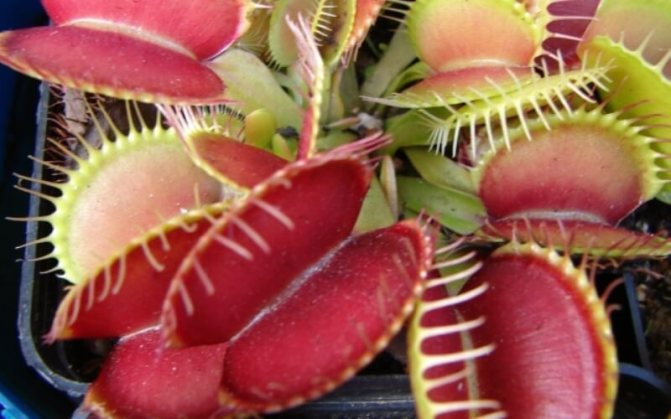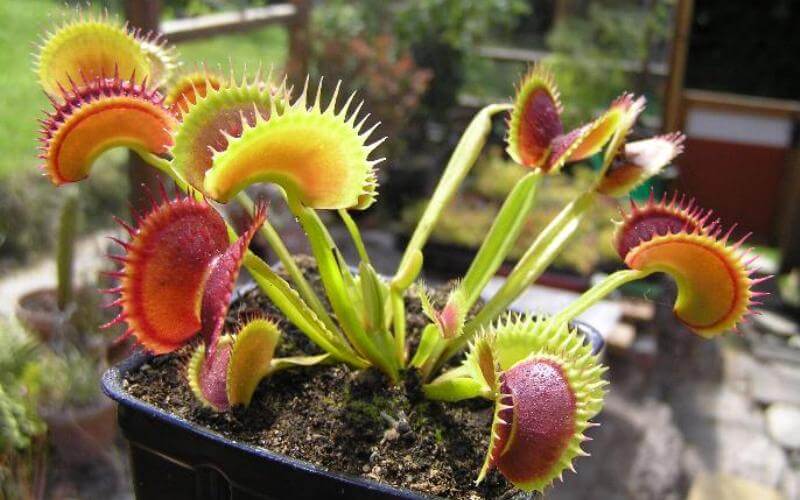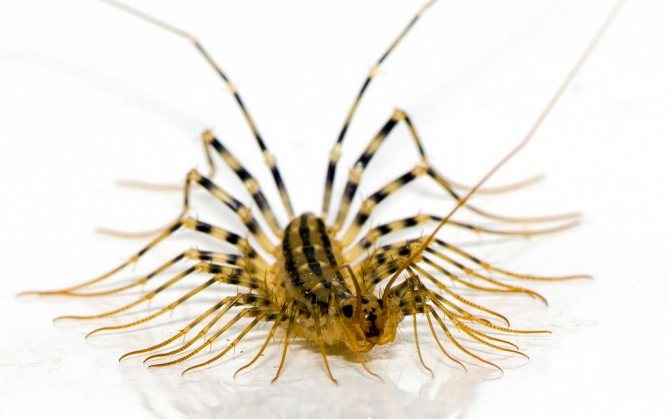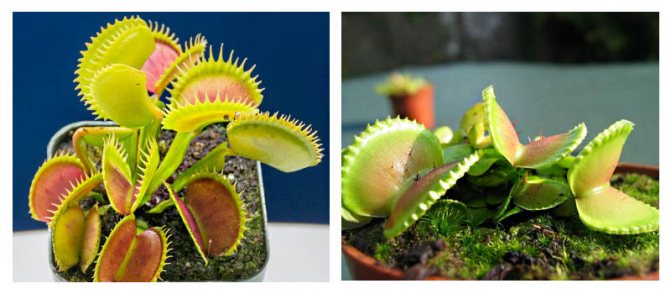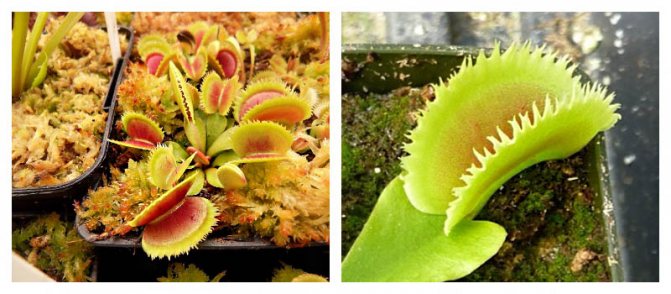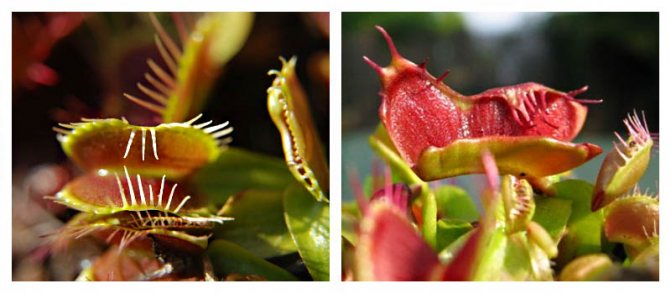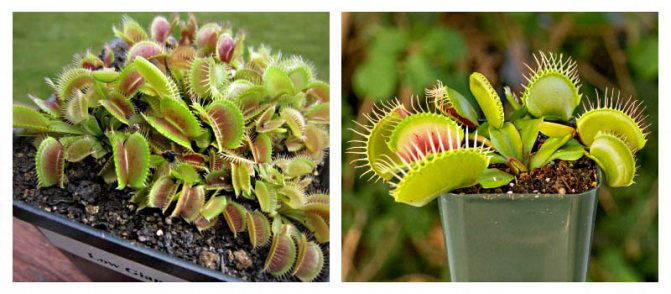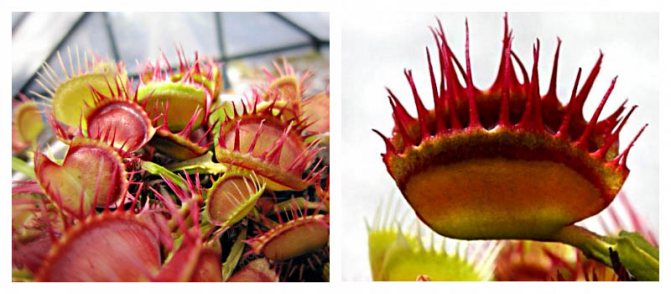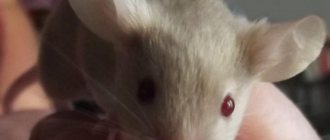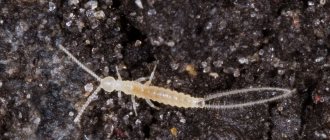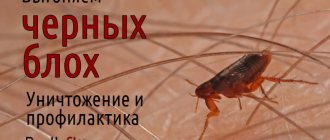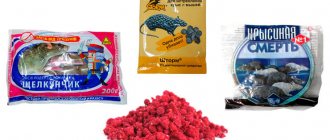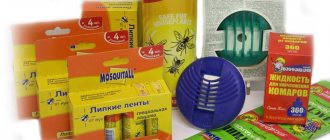Despite the appearance that disgusts most people, the common flycatcher is not as dangerous as many other insects that are found in homes. Centipedes are found both in private houses and in city apartments. What do centipedes look like? Where do the living quarters come from? How to deal with these uninvited guests? What to do in case of a bite?
How does the domestic centipede differ from the centipede?
This insect looks like a scolopendra. Unlike the domestic centipede, the latter has a more impressive size, sometimes growing up to 15 cm. In addition, the centipede has shorter limbs, and they are not as thin as those of the centipede. The main difference between these species of arthropods lies in the chitinous cover. In the centipede, in comparison with the second insect, it is not as strong. In scolopendra, the surface of the body is so hard that it can only be killed with a hammer or a shovel.
Scolopendra are much more dangerous to humans. Their bite is more painful than that of a flycatcher. In addition, the consequences of a scolopendra attack are more pronounced.
Interesting behavior
The flycatcher makes good use of its long legs. Can move at an alarming speed - the equivalent of over 64 kilometers per hour in human terms. This will scare even the most die-hard arthropod lover. Athleticism shouldn't scare you. The house flycatcher is simply well equipped to chase and catch prey.
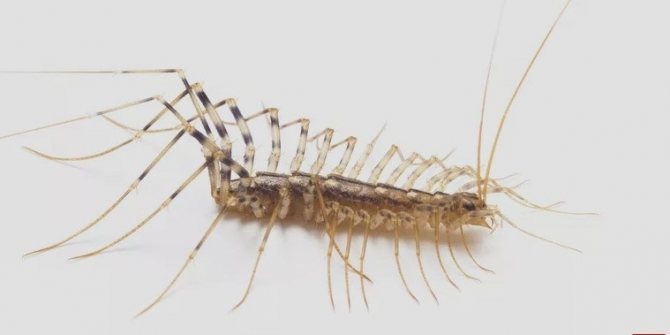
Just as their speed helps to capture prey, it also allows the centipede to avoid predators. If the predator manages to grab a leg, it throws off the limb and runs.
Oddly enough, the severed leg will continue to move for several minutes after its owner leaves the scene. Shedding even in adulthood and restoring lost limbs.
Why do centipedes appear in a private house and apartment and where do they live?
The centipede enters a residential building or apartment in search of food. Usually, these insects can be found in the toilet, bathroom and kitchen. Initially, they live in basements and basements. The ideal habitat for these arthropods is places where it is warm, humid and dark.
The main reason for the appearance of these uninvited guests in the living room is the availability of food. Centipedes feed on other small inhabitants of the dwelling: mosquitoes, flies, midges, woodlice, cockroaches, spiders, skin eaters, moths, ants, fleas, butterflies, larvae. Flycatchers eat any insects that enter the house.


For a house flycatcher, it does not matter what time of day to go in search of food. She can do it day and night. However, this creature is activated mainly with the onset of darkness. In winter, no matter how warm and cozy the dwelling is, centipedes hibernate. For the winter period, they simply freeze in some place inaccessible to humans. In the coming of spring, these predators wake up and again go out in search of food.
It is noteworthy that in the wild, creatures like them are not limited to small prey. They are able to kill even small reptiles, frogs, rodents and birds.
Care
Feeding
The most difficult and at the same time fascinating process is feeding the plant. Fertilizers cannot be usedTo avoid this procedure, Dionea is a predator, and it receives all its nutrients from insects. Spiders, flies, small cockroaches and mosquitoes are suitable for feeding. If a large insect (such as the May beetle) falls into the trap, the trap will not be able to digest it. And then it turns black and dies, it must be carefully cut off.
The flycatcher takes from 10 days to two weeks to digest food. Only when the trap is fully opened does it mean that it is ready to eat. The question always arises: where to get live insects for feeding?
- In the summer, you can take the plant out to the terrace, the smell of nectar will attract food by itself. You just need to make sure that large insects do not fall into the traps;
- Some people raise flies from maggots, which grow outdoors in rotting meat or fish. But this procedure is not suitable for everyone, just like growing mosquitoes from bloodworms;
- Sometimes, in the garden, they spread adhesive tape not far from the anthill, and catch ants with tweezers in a jar;
- Do not feed the flycatcher if the plant is weakened by disease or after transplantation.
Do not feed the flycatcher with pieces of meat, and in no case do not feed gnawing caterpillars. In winter, the Venus flytrap does without live food until spring, when insects begin to fly out.
The traps are fed with tweezers, dropping a fly or an ant into it. For the entire growing season, Dionea needs 3 flies or large mosquitoes.
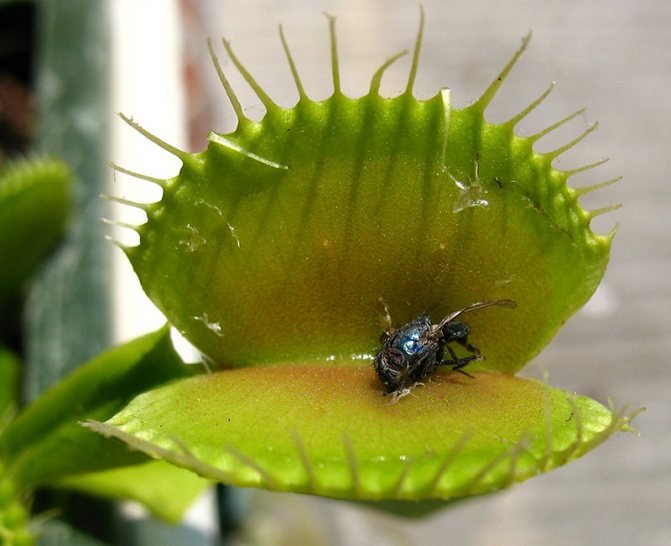

Watering
The Venus flytrap is not watered, it is given water in a pan, and through the holes in the pot it enters the roots. Most importantly, the water must be rainwater (of course, not from a dirty city roof) or distilled. It is very important for the plant that the water is as soft as possible. In the stage of active growth, watered at least three times a week.
You cannot use ordinary water, thawed, filtered, settled water, this will lead to the death of Dionea!
Check the soil for moisture every day. Drying out of an earthen coma is detrimental to an exotic plant. Choose a pot for a plant that is high and small in diameter, since the roots of the Venus flytrap are long. In nature, the plant lives in flooded meadows or peat bogs, where there is a lot of underground water. Therefore, it does not need watering from above. Water can get caught in the traps and damage them.
Lighting
The most favorable location for a predatory flycatcher in an apartment is the southeast and southwest windows. The plant should receive at least 6 hours of light in the morning and the same amount in the evening. If the plant is planted in a florarium that provides high humidity, artificial lighting may be needed. A 40 watt lamp is placed at a height of about 25 cm, depending on the size of the plant, and left on for 15 hours.
In summer, Dionea can be taken out onto a balcony or an open loggia, but care must be taken so that direct sunlight does not fall on the flower. For proper development, light is necessary for a plant, but a measure is needed in everything. There is no need to turn the pot, as they do with other plants - the Venus flytrap does not like to be disturbed.


Temperature
In summer, the optimum temperature for a plant is from 20 to 30 degrees Celsius. Therefore, it can be easily taken out to the warm side of the veranda or terrace. In winter, during the dormant period, the temperature is reduced, but not lower than +8 degrees.
Humidity
Venus flytrap loves humid air 50-70%, but this is difficult to achieve without spraying. Well, if it is planted in the florarium, natural moisture is preserved there. She also does not like stagnant air, but drafts are contraindicated for her. Ventilate the room as needed, but not for long. If it grows in a pot, then you can put a bowl of water. The vapors will humidify the dry air of the apartments directly at the flower.
The soil
The most suitable substrate must correspond to natural conditions and consist of:
- 4 parts sour peat (it is better to buy in a flower shop);
- 2 parts perlite soaked in water for a week;
- 1 part coarse river sand (boiled in distilled water).
In this case, drainage is not needed, since the roots feed on water from the pan. The pallet must be high enough. It is important that the plant is only planted in plastic or glass pots. Ceramic and clay are prohibited due to the high acidity of the substrate.
Transfer
An adult plant is transplanted only in a healthy state in the spring. This procedure is carried out once a year, after wintering. When transplanting, care must be taken, since the roots are very fragile, any damage to the roots leads to difficulties for the plant to take root in a new place.
Using the transshipment method, remove the root system and clean it of old soil. If it is difficult to separate, soak the roots in water and then rinse with a spray bottle. After transplanting into a new pot, the plant will need about a month to adapt, so the transplanted flower should be protected from bright sunlight and watered more often.
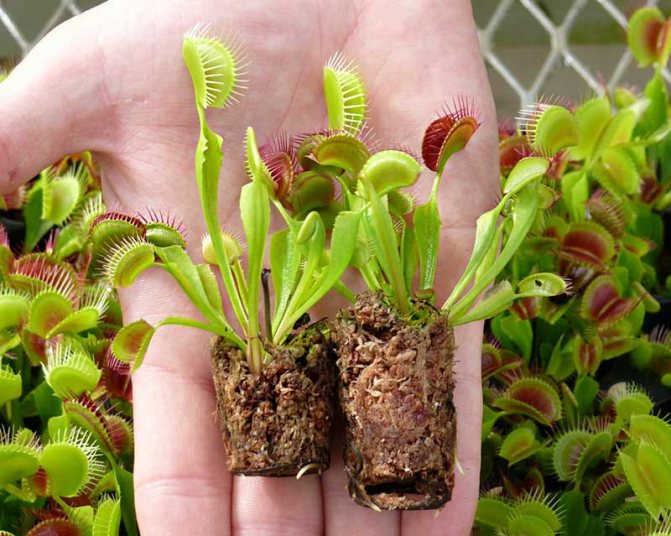

Fertilizer
Top dressing for the Venus flycatcher is not applied in any form, since it receives all the necessary nutrients from insects.
Flycatcher benefits
Despite the creepy appearance of the centipede, which causes many unpleasant emotions in the inhabitants of the house, the flycatcher is a very useful creature. In the home, this predator destroys other insects: woodlice, cockroaches, spiders, moths, etc. On the backyard of a private house, these arthropods successfully fight pests of garden plantings, which is why it is not recommended to kill them.


The centipede is more a friend of man than his enemy. The following arguments speak in favor of this creature:
- common flycatchers do not damage human property - they do not spoil interior items and do not touch food;
- insects lead a secretive lifestyle, extremely rarely catching the eyes of the inhabitants of the dwelling;
- centipedes are not disease carriers;
- in the south of the country, these orderlies of the vegetable garden and garden are revered along with useful birds;
- in Ukraine, this insect is listed in the Red Book.
Spread
S. coleoptrata is an indigenous inhabitant of the Mediterranean region. But it spread to most of Europe, Asia, North and South America, Chile, Los Lagos regions.
South Africa - found in Western Cape, Cape Town (Vredehoek, Mowbry, Edgemead, Green Point, Zonnebloem, Woodstock, Stellenbosch, Gordon Bay), KwaZulu-Natal, Pietermaritzburg.
The flycatcher can be found in eastern and southern Australia, from Perth to Adelaide, South Australia, to Sydney, New South Wales, Tasmania. Other countries where they have been found include New Zealand, Japan, South Korea. Relatively rare for South and Southeast Asia.
Do centipedes bite and is their poison dangerous?
The flycatcher is a completely harmless and peaceful creature. She never attacks a person for no reason. If there is no threat to life, this insect will prefer to quickly leave, hiding in a secluded place. When bitten, the centipede injects a poisonous substance under the victim's skin. Its poison is not as dangerous as the one that secretes centipede.
When these insects bite, a person experiences slight pain and burning. The sensations are the same as when attacked by a bee. The bite of this arthropod animal is dangerous only for allergy sufferers. The consequences of it are the same as when most allergens enter the body of a person prone to allergies.
Behavior
They feed on spiders, bed bugs, termites, cockroaches, silverfish, ants, other domestic arthropods. The poison is excreted through the forcipules. Not through the lower jaw, therefore tourniquet, not bite. They are night hunters.
Despite their developed eyes, they rely on their whiskers when hunting. Antennae are sensitive to both odors and tactile information. Use mandibles and legs to hold prey. Thus, they can deal with several small insects at the same time.
To catch the prey, they either jump on it or use their feet in a technique described as "lasso". The use of legs to defeat prey is also described.
They have adapted the diet to the type of danger the victim may pose to them. For wasps, retreat after applying the poison to give it time to take effect.
When the flycatcher is at risk of becoming prey, it can detach legs that are trapped. It has been noticed that Crimean flycatchers take care of their legs by curling around them.
1902, CL Marlatt, US entomologist, gave a short description:
What to do if a centipede has bitten a person or a pet?
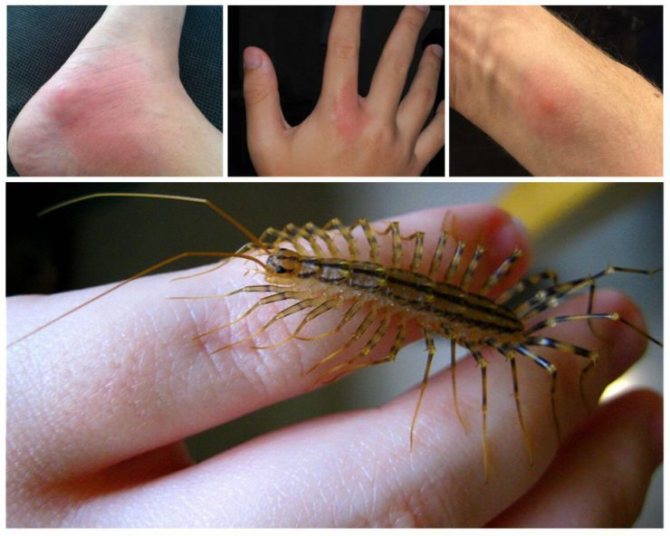

Usually, the discomfort after being bitten by this insect disappears in a couple of days, and in most situations, medical attention is not required. Particular vigilance should be shown to people prone to developing an allergic reaction, and parents of children affected by the flycatcher. The first thing to do after a centipede attack:
- wash the wound with laundry soap for 10 minutes;
- treat the bite area with a disinfectant (hydrogen peroxide, Chlorhexidine);
- apply ice wrapped in a cloth in case of swelling and severe burning;
- take a pain reliever if you experience severe pain.
Allergy sufferers affected by the bite of this insect are advised to take an antihistamine. After a centipede attack, you cannot cauterize the wound or try to make an incision in order to suck out the poisonous substance from it.
As for pets, in defense, the flycatcher can try to bite them. However, it is unlikely that she will be able to bite through the thick skin of a dog or cat, and even if this happens, her bite will not entail any consequences for the health and well-being of the animal.
Hunting
Seeing Dionea for the first time and not knowing about its features, you might think that this is an ordinary flower with amazing leaves. But observing the procedure for his nutrition allows you to understand that everything is not so simple. This can be compared to the hunting process of predators in the animal kingdom. At first, she seems to be waiting for a convenient moment when the victim can no longer escape. The trap quickly slams shut, and it is no longer possible to get out of it, because the leaves are compressed more and more, forming a dense "bag". Within a few days, digestive enzymes dissolve the victim's body, leaving only a chitinous membrane. After the meal is over, the trap will re-open, allowing the wind to carry away the leftovers.
All this looks so exciting that it seems as if Dionea has a mind. In fact, all processes are due to chemical reactions. In response to irritation of special villi, the cells react by releasing certain substances, under the influence of which the geometry of the leaf changes, and the trap closes. This interesting process has been studied in detail with the help of modern technologies, so the fact that Dionea does not have the cunning of a predator is for sure. But still, watching the hunt, it is sometimes difficult not to forget that the flycatcher is a plant.
How to get rid of domestic centipedes?
You can get rid of these uninvited guests in a city apartment or private house by professional means. Also, folk remedies that are safe for humans and pets will come to the rescue in the fight against these small and nimble insects. If you need to remove flycatchers, but you do not want to use inhumane methods, there are many methods for driving them out of your home.
How can you poison flycatchers?
Not all insect control methods are effective against these intruders. So, using glue traps is completely pointless.Having adhered to them and even losing most of the legs, the centipede will still run away, and the limbs will grow back over time. It is also not recommended to use baits with tasty poison, since these predators feed only on insects and will not reckon with the delicacies offered to them.
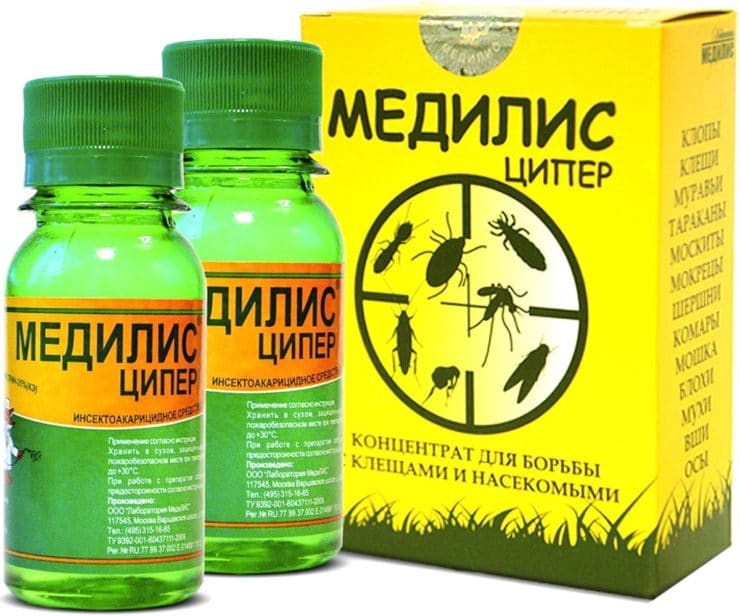

You can remove many-legged individuals forever with the help of insecticidal preparations. Easy-to-use sprays are suitable for this: Stareks, Medilis-Ziper, Combat, Reid, etc. You should also pay attention to products that do not require spraying: Global Original paste, Lambda-zone microencapsulated suspension, aquafumigator Raptor ", etc. They must be used in strict accordance with the manufacturer's recommendations for use.
There are many remedies for controlling these arthropods that require self-preparation at home. Their advantage over ready-made insecticides is complete safety for the inhabitants of the dwelling in which the flycatcher has settled. Information about the most effective folk remedies is presented in the table:
| Ingredients | Preparation | Application |
| Boric acid | Not required | Spray areas where pests often appear. |
| Boron powder | Dilute the product with a little water. | |
| Red hot peppers | Not required | Add powder where flycatchers often appear. |
| Diatom powder |
How to scare away unwanted tenants without killing?
There are several humane ways to get rid of these arthropods. These thermophilic creatures do not tolerate low temperatures, so you can drive them away with the help of cold. The freezing method has several features:
- the method is applicable only in winter, if it is possible to leave the home for a while;
- to get rid of uninvited guests in the room, it is necessary to withstand negative temperatures for at least 3-4 hours;
- the method is suitable for use exclusively in dwellings without central heating, otherwise freezing of the coolant in the heating pipes or rupture of the heating radiator cannot be avoided.
To drive away insects, you need to deprive them of food. To do this, you need to remove flies, cockroaches, moths, wood lice, etc.
Care errors
- The most common feeding errors occur. Often, growers are fond of this process and provide food that the flycatcher cannot digest. Do not feed into all traps.
- Be sure to arrange a winter rest for the plant. If you store the Venus flytrap in the refrigerator, do not forget to moisten the soil, otherwise it will wither and it will be very difficult to return it to its healthy appearance in the spring.
- Dionea needs careful care, so this exotic plant is best dealt with by those who have a lot of free time.
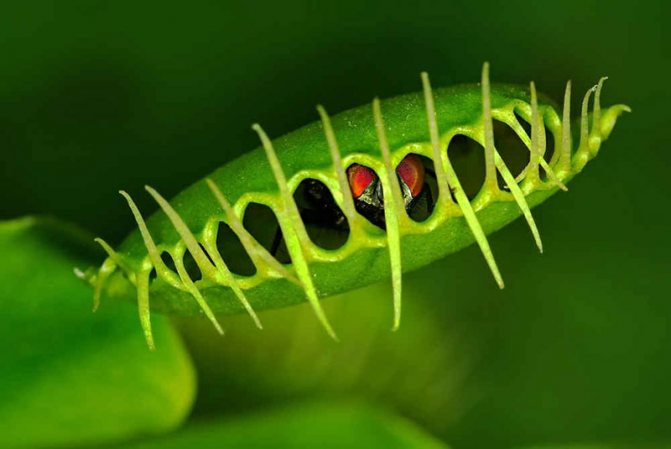

How to prevent a flycatcher from entering the house?
To prevent the appearance of uninvited guests in your home, you must:
- timely identify and exterminate domestic insects;
- do not allow the air in the bathroom to be oversaturated with moisture;
- after taking a bath or shower, wipe dry all wet surfaces;
- regularly ventilate the living space;
- close the taps tightly, prevent them from leaking;
- to close up the cracks and cracks in the house;
- install on the ventilation holes of the grill not an ordinary mesh, but with small cells through which centipedes cannot crawl;
- monitor the condition of the front door rubber seal.
Loading ...
Reproduction
Seeds
During flowering, artificial pollination should be carried out with a cotton swab or soft brush. If pollination is successful, small seed pods are formed. After three months, the seeds are ready for sowing. Seeds quickly lose their germination - so sowing must be done right away. You can also purchase ready-made seeds.
- The seeds need special preparation.To do this, you need to take a fungicide solution, moisten a cotton pad or cloth with it, place it in a tight airtight package, and close it to maintain high humidity. Then the packed seeds are refrigerated for 5 weeks. Periodically wetting them with a fungicide solution, and make sure that mold does not appear. The seeds should not swell or germinate.
- Then the seeds are scattered over the surface of the prepared soil, consisting of 70% sphagnum and 30% sand, without covering. The substrate must be poured with a fungicide diluted in distilled water at room temperature;
- Cover with foil or glass, so that you get a small greenhouse. It is placed under bright, diffused light.
- The temperature should be within 24-29 degrees;
- All the time they check the moisture content of the soil, if necessary, moisten it on top of spraying from a spray bottle;
- Seedlings will appear in two to three weeks. The same amount must be waited before planting seedlings in separate pots;
- It will take about 5 years for the Venus flytrap to become an adult plant.
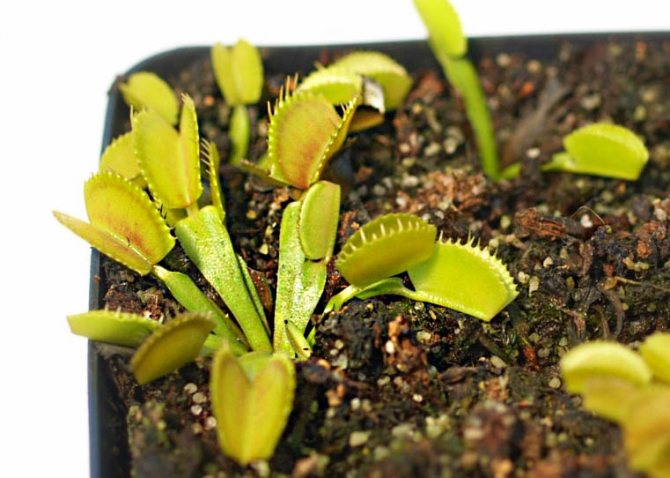

Cuttings
If you want to breed a flycatcher cuttings, you need to cut off the leaves of the plant, treat the cuts with heteroauxin, plant in the ground (the composition of the soil is the same as for the greenhouse). The planted leaf must be covered with a transparent plastic cup. A signal that the plant has taken root will be the growth around the mother leaf. The only drawback of this method of propagation of the flycatcher is the frequent damage to the leaf by molds.
By dividing the bush
Most often, the plant is propagated during transplantation. After washing the roots, the young rosettes are carefully separated from the old bush. Thus, the old plant is renewed, and young rosettes are obtained for reproduction. They are seated in separate pots and placed in trays of water.
Appearance
The outer skeleton of a flycatcher contains chitin and sclerotin. The body is yellowish-gray in color and flattened in shape. Through the entire body there are three stripes, which have a blue or red-violet hue in color.
The body includes 15 segments. Each segment has its own pair of legs. The last legs are the largest in size, can be longer than the entire body and resemble a mustache. For this reason, the tail is often confused with the head. The second pair of extreme legs is located on the side of the head and has been transformed into leg-jaws - they protect the flycatchers and capture prey.
The centipede has significant dimensions - up to 6 cm. The flycatcher has large eyes and amazingly sharp eyesight.


Centipede eyes can be easily seen

